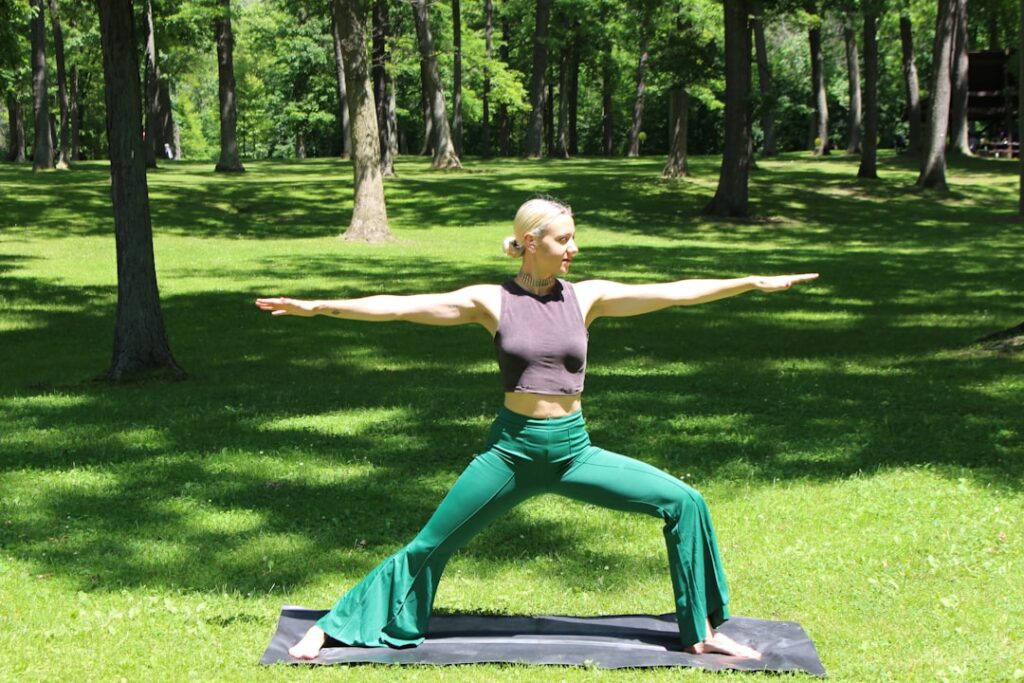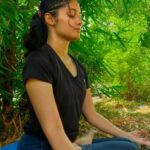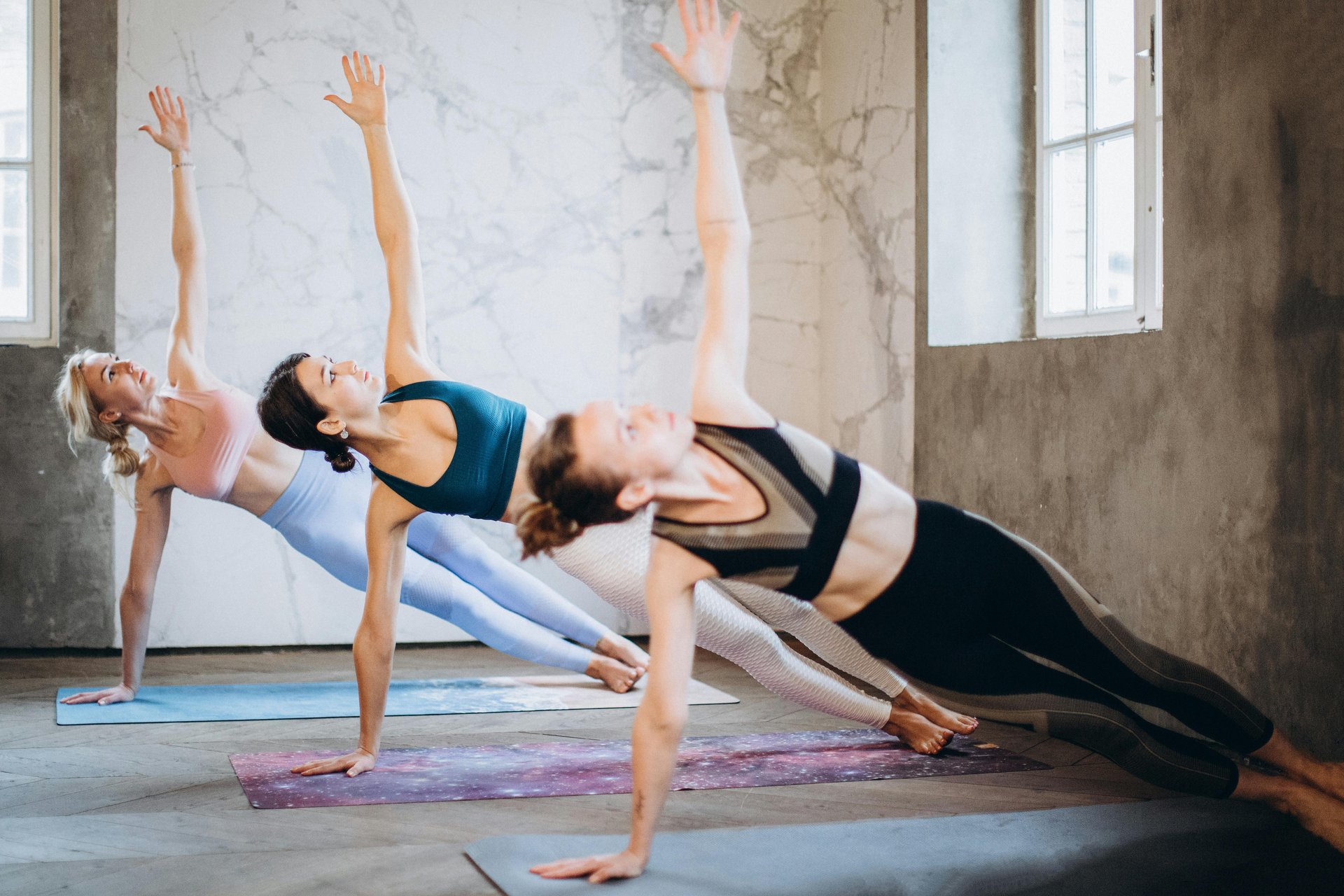Listen to this article:
Key Takeaway
Yoga equilibrium, attained in positions like Tree and Warrior, unites inner serenity with physical stability. Enhancing balance and well-being requires strengthening the muscles of the core, paying attention to breath, and maintaining alignment.
What do you mean by yoga balance? The condition of equilibrium that is sought after in both the physical and mental facets of yoga practice is referred to as balance in yoga. Physically, practitioners work to maintain stability and distribute their weight equally across a range of yoga poses. This requires focus, muscular strength, and flexibility.
Moreover, the goal of mental and emotional stability as well as inner calm is included in yoga balance. It centres on using deep breathing exercises and mindfulness to achieve emotional balance and serenity.
Through yoga balance, people can enhance their general well-being and achieve mental clarity. This balance is essential for daily life as well as yoga practice since it helps people face obstacles with grace and calm.
I recommend watching this video for beginners about yoga balance.
Contents
- 1 What are the benefits of yoga for improving balance?
- 2 Which yoga poses help in building balance and strength?
- 3 What are some beginner-friendly yoga poses for balance and strength?
- 4 How do advanced yoga poses challenge balance and strength?
- 5 What tips can help in mastering yoga balance poses?
- 6 Frequently Asked Questions
- 6.1 How crucial is balance when practicing yoga?
- 6.2 Which typical yoga positions are good for enhancing balance?
- 6.3 How can I strengthen my leg muscles to improve balance?
- 6.4 In order to improve my balance, how can I develop my leg muscles?
- 6.5 How do the ankle, knee, and foot function in balancing poses?
- 6.6 What are some ways I may strengthen my arms to do arm balances?
- 6.7 What are some essential pointers for staying balanced while on the floor?
- 6.8 How can I maintain balancing poses without falling?
- 6.9 Was this helpful?
What are the benefits of yoga for improving balance?
Yoga helps strengthen the muscles in the foot, ankle, knee, and core, which improves balance in numerous ways. Asanas like Utthita Hasta Padangusthasana serve to enhance posture and balance by requiring the practitioner to focus and stabilize on one leg.
Practitioners can find support and centre themselves when lifting and stretching the leg by contracting the abdominal muscles. As the shoulders go back, a strong foundation is formed by the arms and hands pushing into the floor in poses like downward-facing dog. Additionally, yoga improves body awareness and coordination, which facilitates responsiveness to stimuli and reduces the risk of falls during daily activities.
Enhancing balance is also greatly aided by yoga’s emphasis on breath. Through taking deep breaths and letting them out completely, practitioners can develop a sense of focus and serenity that helps them through difficult positions.
Furthermore, in standing poses such as Warrior III, the alignment of the upper body and spine contributes to the development of a robust and steady basis. Poses can also be modified to focus on different parts of the body. For example, in Tree Pose, pressing the palms together works the chest and front of the shoulder.
Regular yoga practice can help you become more fit overall and improve your balance in all facets of your life.
Strengthening core muscles for better balance
Developing stronger core muscles is essential for better balance. By emphasising core exercises like planks and boat poses, people can improve their stability and lower their chance of falling. Stepping back into a lunge position and using your core to keep your balance is one useful exercise.
Wide-legged squats are an additional exercise that tests the ability of the core muscles to sustain the body in an alternate stance. Aim to include at least 6 core-strengthening workouts in your weekly program to gradually enhance your balance.
Which yoga poses help in building balance and strength?
Tree Pose for enhancing balance

A well-liked yoga practice that improves balance and concentration is called tree pose.
This pose enhances mental clarity, helps centre the mind, and improves physical balance. Focusing on a stable point in front of you can deepen concentration and bring a sense of calm and groundedness to Tree Pose.
Warrior Poses to strengthen legs and improve balance

You can strengthen your legs and enhance your balance by doing warrior poses. Maintaining these poses takes mental concentration in addition to physical power. They work the legs, namely the hamstrings, calves, and quadriceps, which helps to increase muscle mass and enhance stability.
Regularly performing Warrior Poses can improve your general strength and coordination, which will help you with daily tasks and other physical activities. The several iterations of this pose, including Warrior I, Warrior II, and Warrior III, work your core and lower body in a comprehensive manner.
Additionally, by combining focused breathing and mindfulness exercises while in these poses, you can develop inner calm and mental clarity.
Eagle Pose for focus and stability
Eagle Pose is a yoga pose that enhances stability and concentration. This pose involves crossing one leg over the other and encircling the other arm like an eagle’s wings. To stay stable in this balancing posture, you need to have both physical and mental strength. You can become more conscious and enhance your capacity to remain in the present moment by concentrating on your breathing and your eyes.
Eagle Pose is also good for increasing flexibility, relieving tension, and loosening up the hips and shoulders. This pose can assist increase leg strength and enhance balance in general. Frequent practice improves your mental and physical steadiness, which makes you feel more centred and grounded in day-to-day activities.
What are some beginner-friendly yoga poses for balance and strength?
Standing Forward Bend Pose for stability and flexibility
One of the best yoga poses for flexibility and stability is the standing forward bend. This pose enhances balance and concentration while simultaneously stretching the hips, calves, and hamstrings. Regular practice of this pose will help you become more flexible and extend your range of motion.
By strengthening the muscles that support your spine, the Standing Forward Bend Pose can help you avoid injuries and have better posture. All things considered, this stance is an excellent method to support both mental and physical health.
High Lunge Pose to build strength and improve balance
A strong yoga practice that improves balance and stability, high lunge pose also strengthens the arms, legs, and core. This pose is a great method to tone muscles and increase general fitness because it requires a strong foundation and engages the entire body.
Regularly performing High Lunge Pose helps enhance your strength, flexibility, and balance. Building a strong foundation for other yoga poses and physical activity is facilitated by using the muscles in the arms, legs, and core.
Proprioception, or the body’s knowledge of its position in space, is enhanced by the balancing element of the posture and can help with overall stability and coordination. Incorporate these benefits and push your physical and mental limits by including High Lunge Pose into your regular yoga practice.
How do advanced yoga poses challenge balance and strength?
Half Moon Pose to enhance stability and leg strength
A yoga pose called Half Moon Pose is great for building leg strength and stability. To stay balanced and open up the hips and hamstrings, this pose calls for strong legs and a strong core. Regularly performing Half Moon Pose helps strengthen your legs and increase your general physical stability.
As you concentrate on preserving alignment and balance, this position also helps to enhance coordination and focus. To really benefit from Half Moon Pose, you must engage your muscles and pay attention to your breath throughout the pose.
You can benefit on and off the mat by developing your leg strength and stability through consistent practice.
Side Plank Pose for core strength and improved balance
A potent yoga pose that strengthens the core muscles and enhances stability and balance is side plank. Lifting your body weight onto one arm and one foot’s side works your quadratus lumborum, transverse abdominis, and obliques.
In addition to strengthening the core, this pose promotes stability and endurance throughout the body.
It’s important to keep your alignment correct and use your core muscles when doing Side Plank Pose to avoid putting too much strain on your lower back. Regularly achieving this stance can help you become more stable and balanced overall, which will help you in both daily tasks and sports.
Engaging the core muscles can also help avoid lower back discomfort and enhance posture.
What tips can help in mastering yoga balance poses?
Focus on breath and alignment while holding the pose
To have a successful and fruitful yoga practice, pay close attention to alignment and breath while holding the posture. You can deepen the pose and reap all the advantages by being mindful of your breathing and making sure your body is in alignment.
While correct alignment guarantees that you are not overstressing your muscles and joints, deep breathing helps to quiet the mind and keep you in the present. Building strength and balance can also be achieved by concentrating on these two areas.
To prevent injury and maximize your practice, always pay attention to your body and adapt as necessary while holding the posture.
Practice regularly and gradually increase the difficulty level
Any talent or hobby can only be improved with consistent practice. Regular practice enhances overall technique and helps to develop muscle memory. If you set aside time for practice every day, you will eventually witness observable improvement.
It’s crucial to progressively up the complexity of your practice sessions. You can avoid burnout and maintain motivation by gradually introducing more difficult exercises into your routine after beginning with easier ones. Taking risks and stepping outside of your comfort zone are crucial for personal development.
As you become more accustomed to a particular degree of difficulty, don’t be scared to push yourself harder and take on new challenges. You can advance to new levels in your powers if you are persistent and dedicated.
Pop quiz! 🧘🤔
High Lunge Pose mainly focuses on building strength in the legs, core, and arms while improving balance and stability.
Side Plank Pose does not engage the core muscles and is solely focused on arm strength.
Practicing yoga balance poses regularly can only enhance physical well-being and does not contribute to mental clarity.
Frequently Asked Questions
How crucial is balance when practicing yoga?
A key component of yoga is balance, which enhances strength, stability, and attention. Doing yoga balance postures helps improve one’s mindfulness and general well-being.
Which typical yoga positions are good for enhancing balance?
Balance and focus are improved by doing yoga poses including Half Moon, Eagle Pose, Warrior series, and Tree Pose.
How can I strengthen my leg muscles to improve balance?
Exercises like lunges, standing poses, and practicing on one leg can help strengthen your leg and improve your overall stability.
In order to improve my balance, how can I develop my leg muscles?
Exercises that strengthen your leg and increase your overall stability include lunges, standing poses and one-leg practice.
How do the ankle, knee, and foot function in balancing poses?
Maintaining stability and avoiding injury during balancing poses requires precise alignment of the foot, knee, and ankle.
What are some ways I may strengthen my arms to do arm balances?
Arm-balancing poses require the strength of your arms and core muscles, which can only be achieved by practicing positions like the Side Plank and Plank.
What are some essential pointers for staying balanced while on the floor?
To improve your floor balance, contract your abdominal muscles, shift your weight evenly, and concentrate on a fixed spot.
How can I maintain balancing poses without falling?
To avoid falls and increase your stability, concentrate on your breathing, keep your shoulders back, and progressively increase your balance in each pose.







